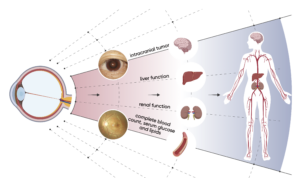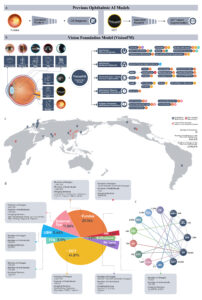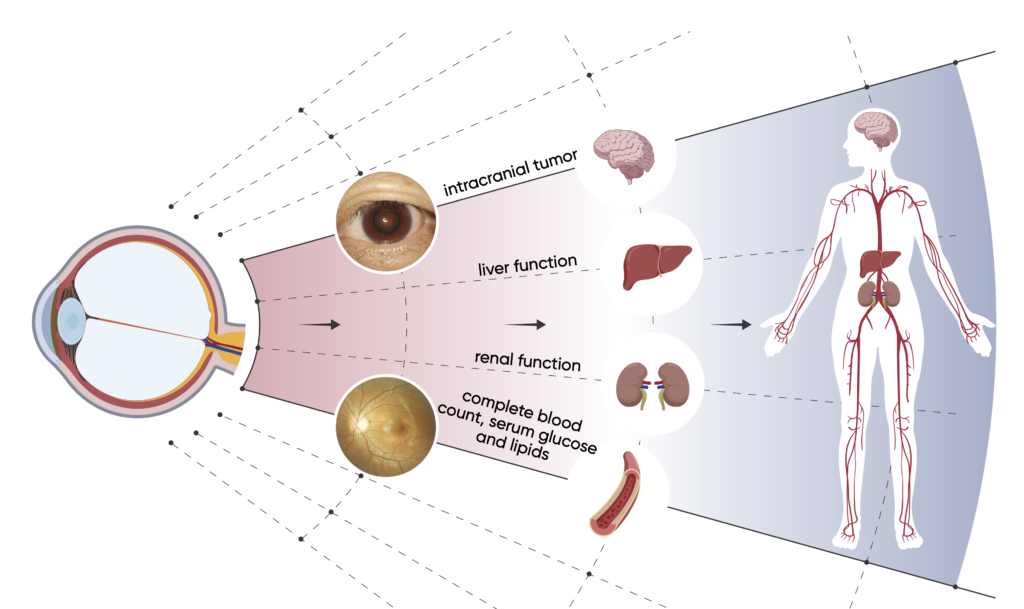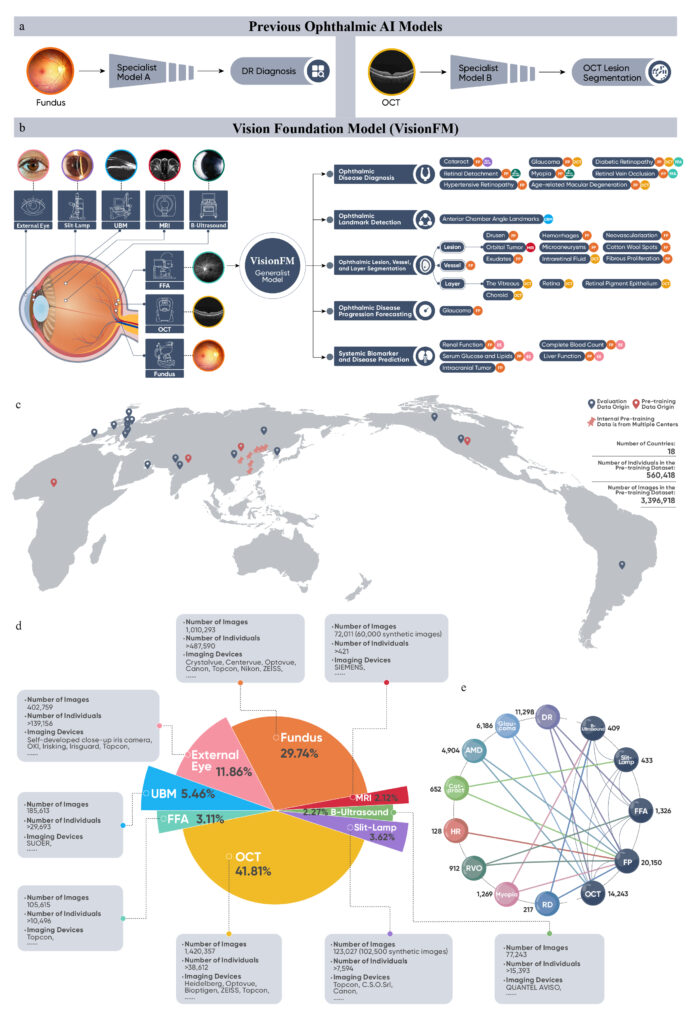CUHK
News Centre
CUHK and Beijing Tongren Hospital develop the new foundational AI model to transform ophthalmic care worldwide
The research team led by Professor Scott Yuan Wu, Assistant Professor of Department of Biomedical Engineering at The Chinese University of Hong Kong (CUHK), in collaboration with Professor Wang Ningli’s team at Beijing Tongren Hospital, has developed an artificial intelligence (AI) ophthalmic imaging foundation model called VisionFM. This model enables the prediction of the presence of tumors from retinal images for the first time, representing a breakthrough in ophthalmic disease diagnosis. The research findings have been published in NEJM AI, a publication of the New England Journal of Medicine Group.
Vision impairment and its associated major eye diseases, such as cataracts, age-related macular degeneration and glaucoma, have become a pressing global health problem. It is estimated that by 2050, about 474 million people may suffer from moderate to severe vision impairment. The situation is particularly acute in low-income countries where there is a shortage of specialised ophthalmologists. Despite the rapid advancements of AI in automated ophthalmic diagnosis, there are still significant limitations to existing models. They often rely on vast amounts of labelled data, which is relatively time-consuming and costly to collect. In addition, many existing models target on a single or limited number of eye diseases and utilise only one imaging modality, such as fundus photographs, preventing their broader application in clinical diagnosis.
To address these challenges, the CUHK and Beijing Tongren Hospital research teams developed VisionFM, a groundbreaking AI ophthalmic imaging foundation model. VisionFM was pre-trained on the world’s largest ophthalmic data cohort containing 3.4 million images from eight different ophthalmic modalities, covering a wide range of ophthalmic diseases, imaging modalities and devices, as well as clinical scenarios. This innovative model has been tested for multiple applications, including ophthalmic disease diagnosis, progression prediction, systemic biomarker prediction through ocular imaging, intracranial tumor prediction, and lesion, vessel, layer segmentation.
VisionFM outperforms existing models in ophthalmic disease diagnosis, achieving diagnostic accuracy comparable to an ophthalmologist with 4-8 years of clinical experience. Additionally, VisionFM demonstrates remarkable few-shot learning capabilities in diagnosis and anatomical segmentation, enabling it to adapt to imaging modalities and devices not encountered in the pre-training phase, or require only a small number of gold-standard samples for rapid fine-tuning. The model also reveals for the first time the association between intracranial tumors and retinal images, enabling the prediction of tumors directly from low-cost retinal images. This holds great potential for the early detection in community and primary care. The model has been deployed to diagnose common eye diseases in Henan Province, China.
Furthermore, the research result indicates that high-quality synthetic ophthalmic data, which passed the Turing test, can significantly enhance the pre-training of foundation models like VisionFM, further improving their efficacy. With its open-source codebase and model, it is poised to address the global challenges and improve patient outcomes through advanced AI technology.
The full research paper can be found at: https://ai.nejm.org/doi/full/10.1056/AIoa2300221

VisionFM was developed by the research team from CUHK, led by Professor Scott Yuan Wu at the Department of Biomedical Engineering, in collaboration with Beijing Tongren Hospital.

VisionFM is able to predict 38 common biomarkers related to complete blood count, liver and renal functions, as well as serum glucose and lipids, directly from eye images. It can also predict the presence of intracranial tumours directly from fundus photographs.

VisionFM is a generalist ophthalmic image foundation model. It was developed using 3.4 million ophthalmic images from over half a million of individuals. VisionFM can process eight common ophthalmic image modalities. It can diagnose multiple eye diseases, forecast the progression of diseases, predict systemic biomarkers and intracranial tumours from eye images, detect anatomical landmarks, and segment vessels, layers, and lesions.






